"A speck of beauty" - fly as an essential tool in the flirting gallant century
• "A speck of beauty" - fly as an essential tool in the flirting gallant century
During the reign of Louis XIV, also known as a gallant century. Ladies and gentlemen wore wigs, shoes with heels, vybelivali himself unrecognizable powdered, painted lips and, of course, glued to the face alluring flies. These artificial birthmarks were literally indispensable accessory aristocracy, without which it is impossible to be on the ball. And flies were used as an instrument of flirtation.

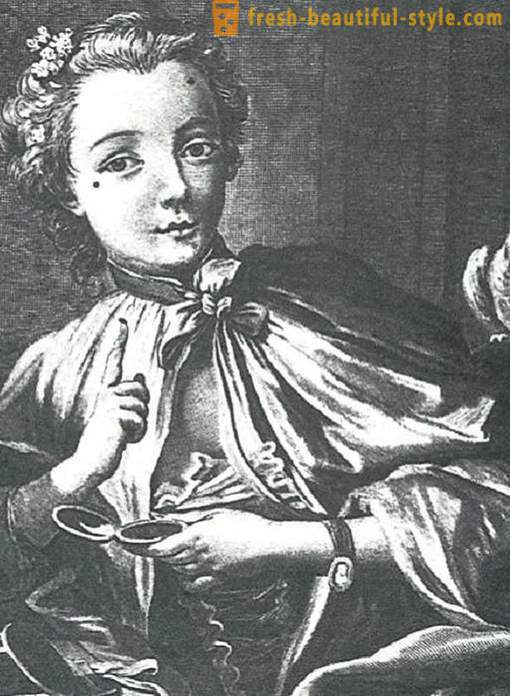
For the first time there was a fly in the East. There, it was believed that on the face of a woman must be at least one mole. But if the nature of the "missed" this detail, the "moles" were doing a mixture of aromatic oils and pounded into powder of precious stones.
In Europe, there was a fly due to the fashion for all the east. On the faces appear aristocratic circles of black taffeta. Particularly bold pasted over sprocket or figures in the form of a carriage, for example. Almost an obsession with flies came in the reign of Louis XIV in the XVII century. Now do not fly out of taffeta and velvet. Sometimes artificial birthmarks reached such proportions that they could easily cover a small wound.
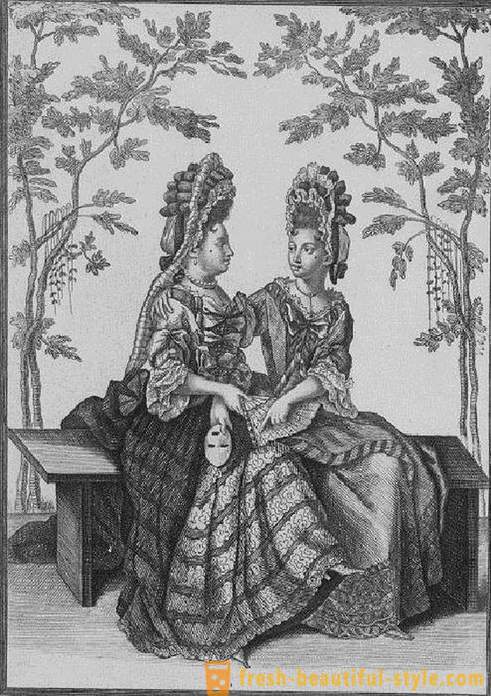
In England fly called "beauty spot" (beauty spot) or zaplatochka (patch). In France, the word stuck mouche, t. E. A fly. In Russia his crosshairs to "fly."
When the Sun King yard fly stuck not only the ladies, but gentlemen. If we consider the fact that the men wore wigs, shoes with heels, applied himself to face the thick layers of whitewash, painted her lips bright lipstick, it is not surprising that in their faces appeared and flies.
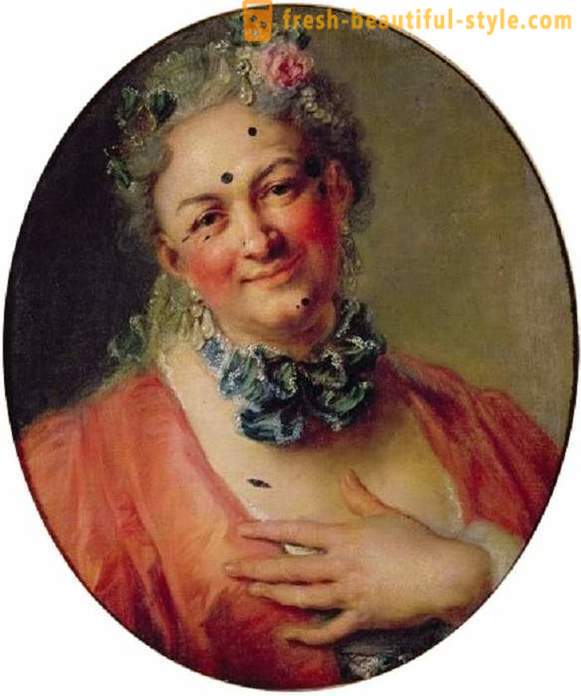
Pierre Zheliott as mollusk plateau in the comic opera by Jean-Philippe Rameau "Plateia, or jealousy of Juno." S. A. Coypel, approx. 1745
However, according to historical documents that do not know that flies cause the court debate is. Keenly debated question: Does well to glue themselves to face more than three flies at once. There was even issued a "Registry of flowers and flies," which regulated the matter. And some ladies managed to stick to up to 15 flies at once.

In the era of the gallant century show their emotion was considered bad form. BUT, with the VII century is called the era of incessant flirting. Ladies able koketnichat with gentlemen without revealing mouth. Not the last role was played by the language of fans and fly language.
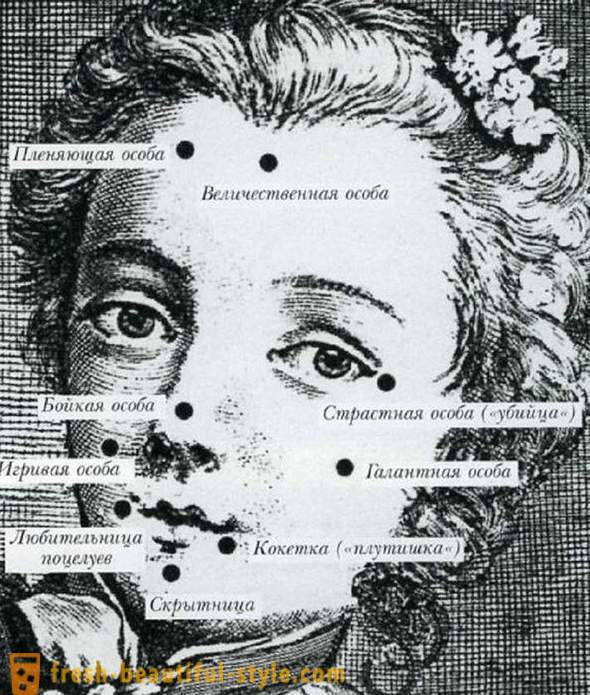
Location artificial birthmark on his face could tell the lady's intentions:
fly in the middle of the forehead - impregnable majestic lady;
in the corner of his mouth - open to flirt;
on the tip of the nose - bold;
under the nose - the parting;
During the ball flies location on the face may change depending on the mood of the ladies to a certain gentleman.
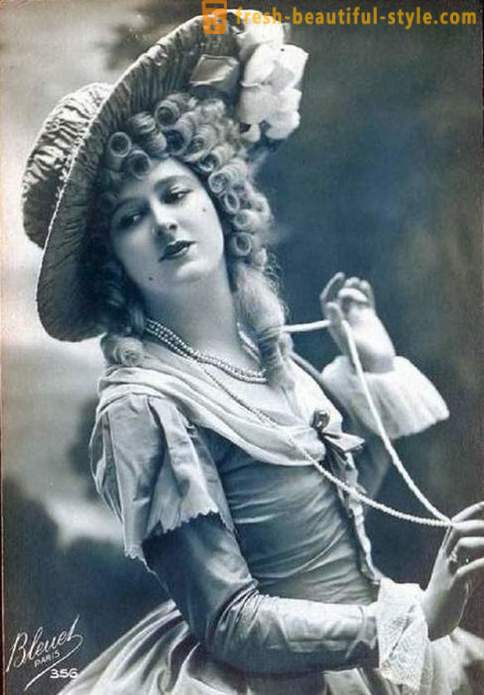
The end of the XVIII and XIX centuries. to replace the flies came other accessories. And at the turn of XIX-XX centuries. reappeared a short interest in artificial birthmarks. Here they have already been pasted and painted with a pencil in the form of hearts, stars and, of course, points.

Girl flies from the early twentieth century.













































